Ten most stunning mosques in Malaysia
Architecture is by far one of the most important expressions of Islamic art. Some of the world’s most beautiful buildings are mosques, a place of worship for Muslims.
Here are some of the most breathtaking mosques you can find scattered across Malaysia if you are looking to admire intricate tiles, expansive domes, and stunning minarets.
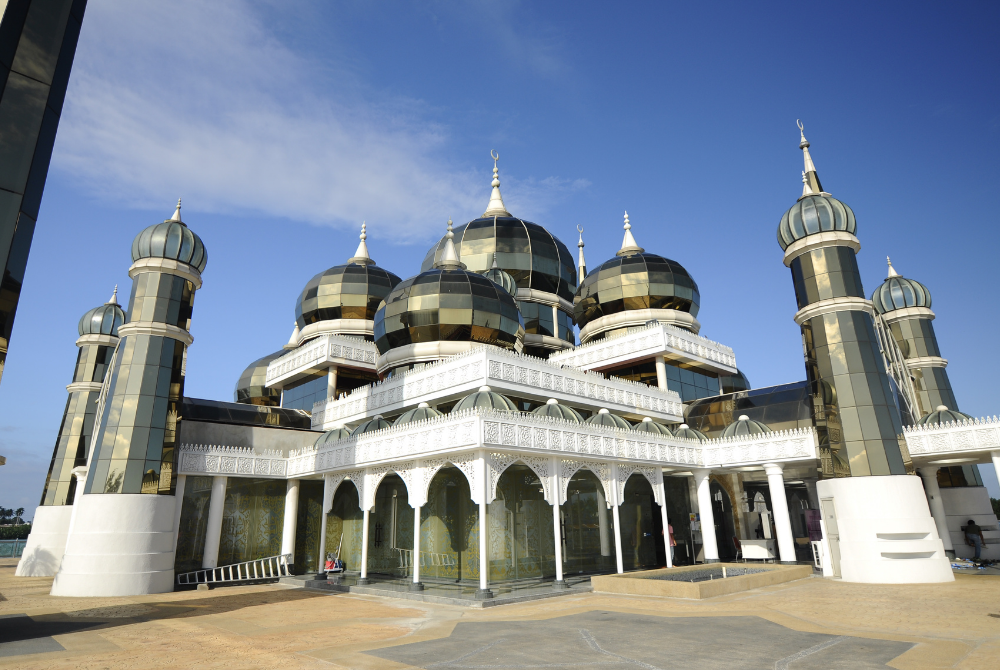
CRYSTAL MOSQUE
Located in the Islamic Heritage Park of Wan Man island in Terengganu, the Crystal Mosque is a unique structure made of crystal, glass, and steel.
The mosque took only two years to construct, from 2006 to 2008, and was officially inaugurated on February 8 or 2008 by the 13th Yang di-Pertuan Agong Sultan Mizan Zainal Abidin of Terengganu.
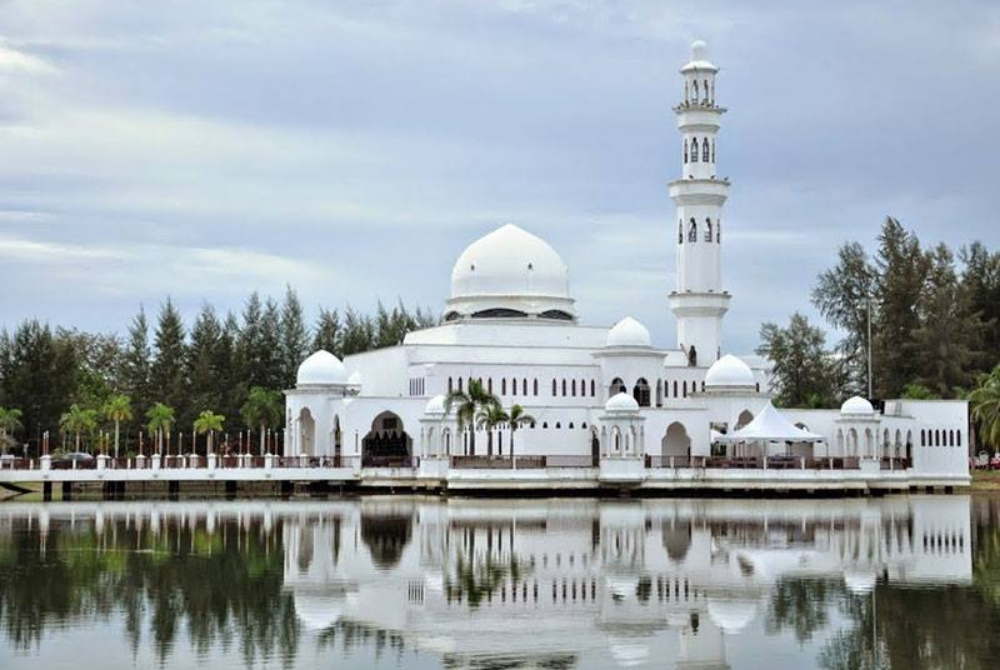
TENGKU TENGAH ZAHARAH MOSQUE
The Tengku Tengah Zaharah Mosque or the Floating Mosque is the first real floating mosque in Malaysia. It is situated in Kuala Ibai Lagoon near the estuary of Kuala Ibai River, 4 km from Kuala Terengganu Town. Construction began in 1993 and finished in 1995.
The mosque was officially opened in July 1995 by Almarhum Sultan Mahmud Al-Muktafi Billah Shah, the late Sultan of Terengganu. The mosque combines modern and Moorish architecture; incorporating the use of marble, ceramics, mosaic works and bomanite paving.
The white structure of the mosque covers an area of roughly 5 acres and can accommodate up to 2000 attendees at a time.
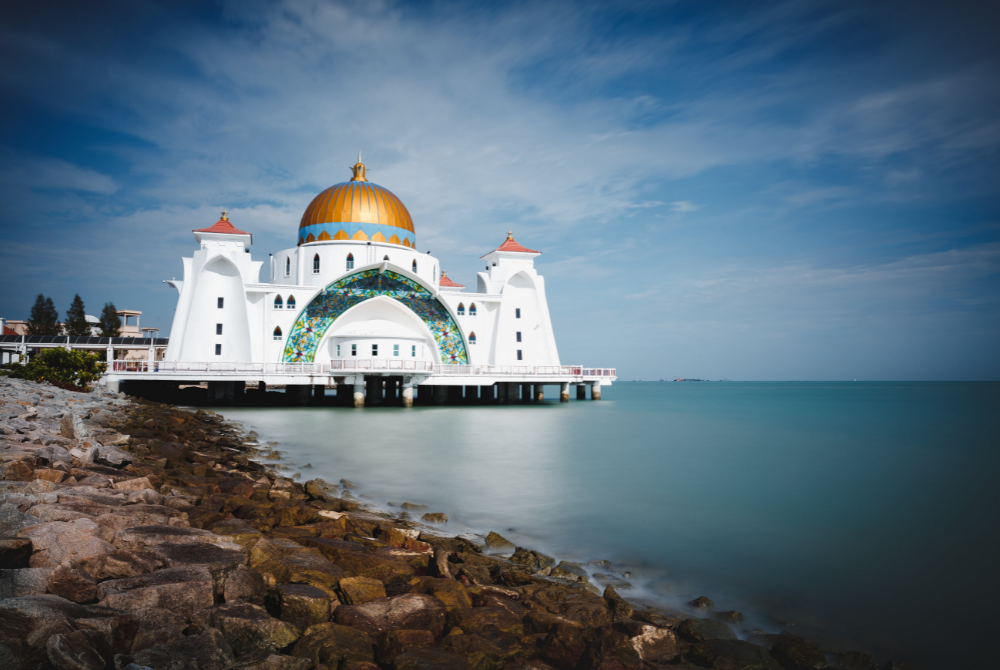
MELAKA STRAITS MOSQUE
The Melaka Straits Mosque can be found on the man-made island in Melaka. Its construction cost a whopping RM10 million because of its key feature - it looks like it is floating when the water level rises to a certain height.
Both Middle Eastern and Malay elements were used in designing the mosque, with two intersecting arches leading to the main entrance, the space in between covered by stained glass.
The minaret, which is about 30 metres tall, is also used as a lighthouse.
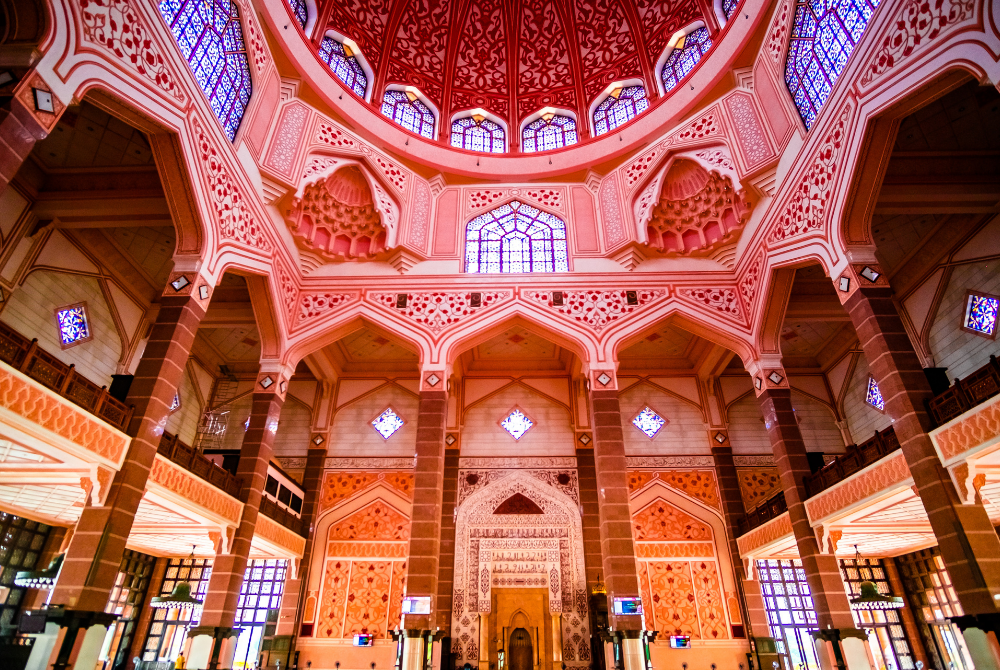
PUTRA MOSQUE
Also known as the Pink Mosque for its pink dome, the Putra Mosque acts as the principal mosque of the township of Putrajaya.
The mosque took two years to construct, and was completed in 1999. It is located next to the iconic Perdana Putra.
It was built by using rose-tinted granite and consists of three main functional areas – the prayer hall, the courtyard, learning facilities, and function rooms. The mosque can accommodate up to 15,000 worshippers.
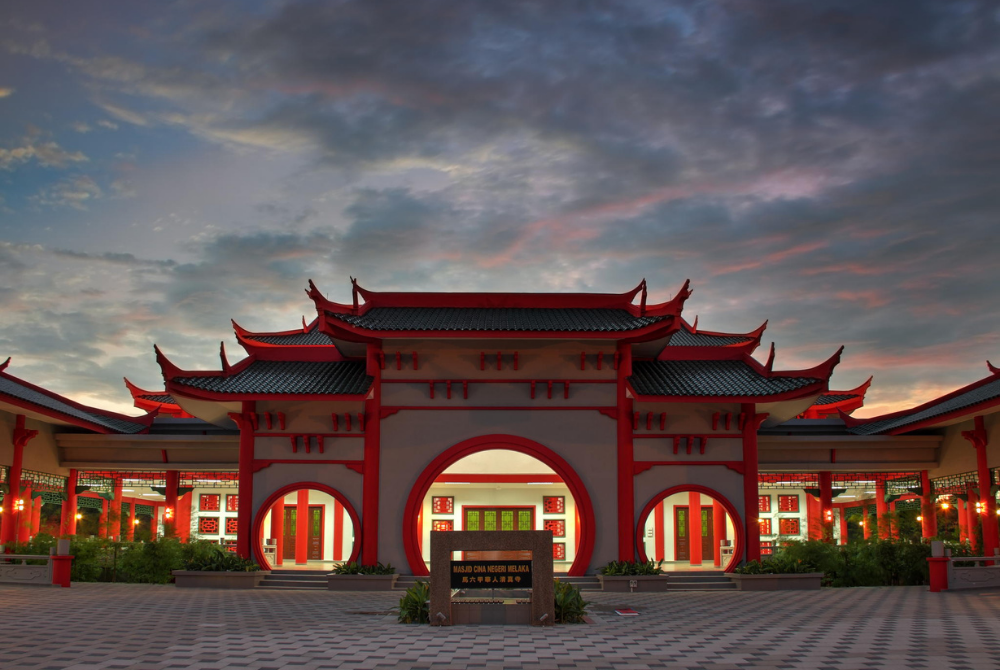
MELAKA CHINESE MOSQUE
A Chinese-style mosque in Krubong, Melaka, it is the third of its kind in the country that was developed by the Melaka Chinese Muslim Association (Pertim).
Construction began in August 2012 and concluded in April 2014. It took a hefty RM7.5 million to build.
Pagodas and Chinese calligraphy adorn the mosque, inspired by architectural designs from several mosques in the cities of Beijing, Shanghai, and Xi’an in China.
It has one minaret tower and two domes, and is equipped with a main prayer hall, a library, a multipurpose hall, several offices, koi ponds and even a restaurant.
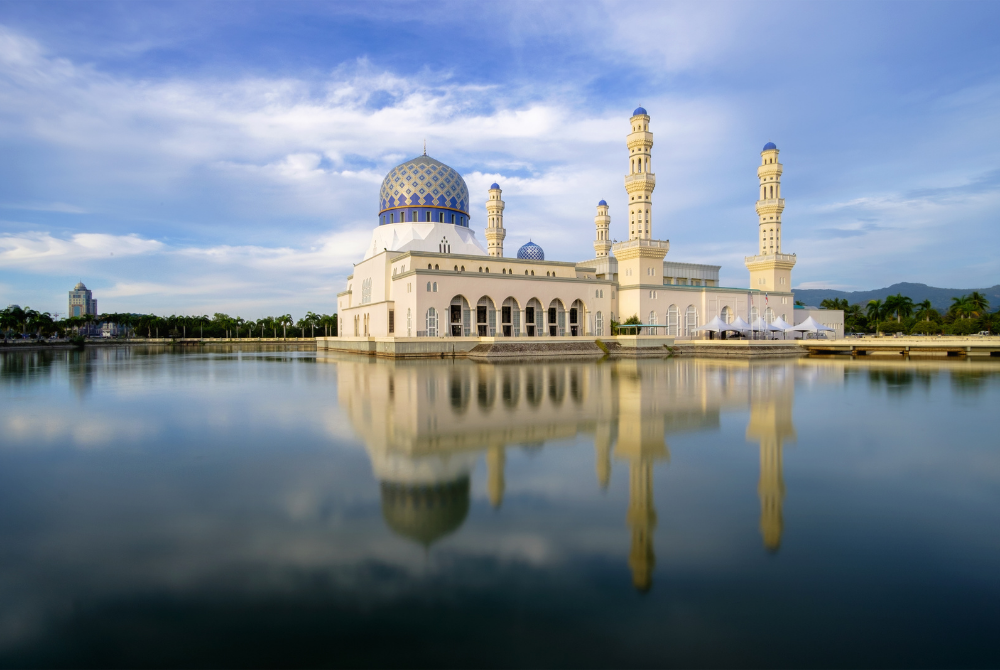
KOTA KINABALU CITY MOSQUE
The Kota Kinabalu City Mosque was officially opened to the public on Feb 2, 2000, following a proclamation of the city status of Kota Kinabalu. It is located near Pasir Road on the shores of Likas Bay, partially surrounded by a human-made lagoon. This gave rise to its nickname "The Floating Mosque".
The mosque is heavily inspired by the Nabawai Mosque, the second holiest site in Islam. Its construction cost RM34 million.
The mosque houses an ATM, three madrasas, a palliative care clinic, and a fish farm. Here, visitors may also go on paddle boat rides.
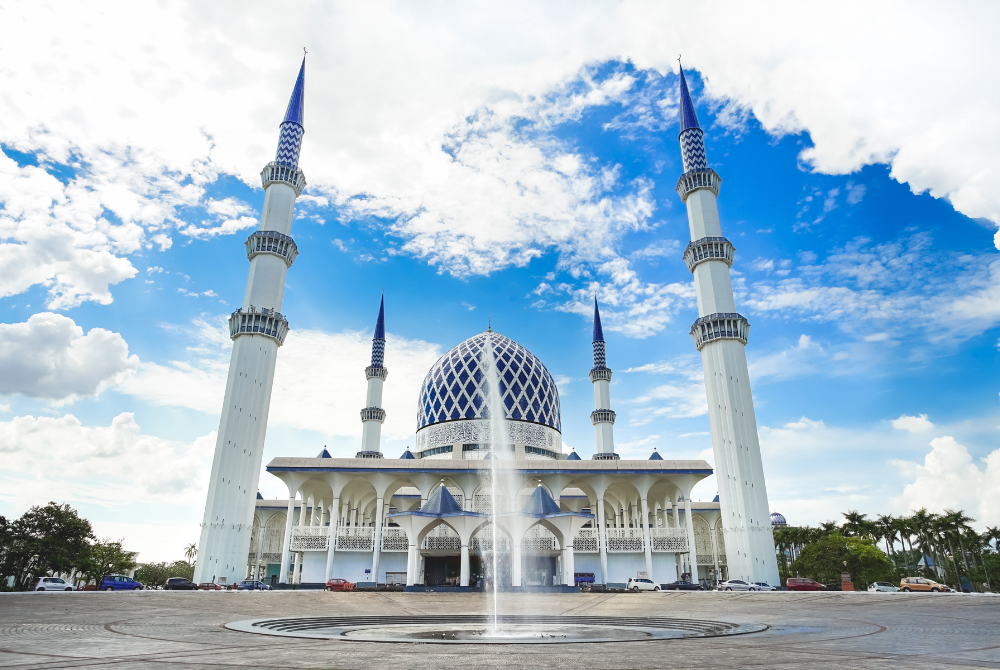
SULTAN SALAHUDDIN ABDUL AZIZ MOSQUE
The Sultan Salahuddin Abdul Aziz Shah Mosque, also known as the Blue Mosque, is the state mosque of the state of Selangor.
It can be found in Shah Alam and is the country’s largest mosque, making it the second largest in Southeast Asia.
Its most distinguishing feature is its large blue and silver dome, the largest one in the world. Four minarets encircle the mosque at each corner.
Before Hassan II Mosque was built in August 1993, the mosque was recognised by the Guinness Book of Records as having the tallest minaret in the world.
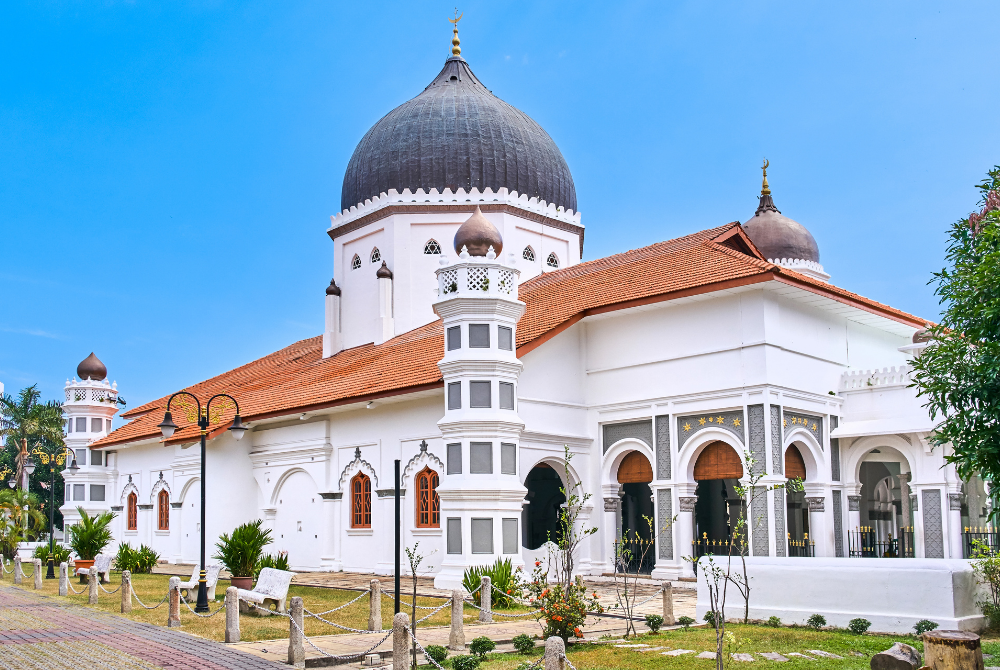
KAPITAN KELING MOSQUE
The Kapitan Keling Mosque was built in the 19th century by Indian Muslim traders in George Town, Penang. It can be found tucked away between Lebuh Buckingham and Jalan Masjid Kapitan Keling.
Acknowledged as being part of George Town’s World Heritage Site, it lies at the centre of the city's Indian Muslim neighbourhood.
The founder of the mosque is also the leader of the “Chulias”, Cauder Mohuddeen Merican. He was granted leave to build a mosque in the area in 1801 by Sir George Leith, who was the Lieutenant Governor of Penang.
A key feature of the interior design is that its aisles are formed by a series of horseshoe arches, crowned with King Edward's plaques.
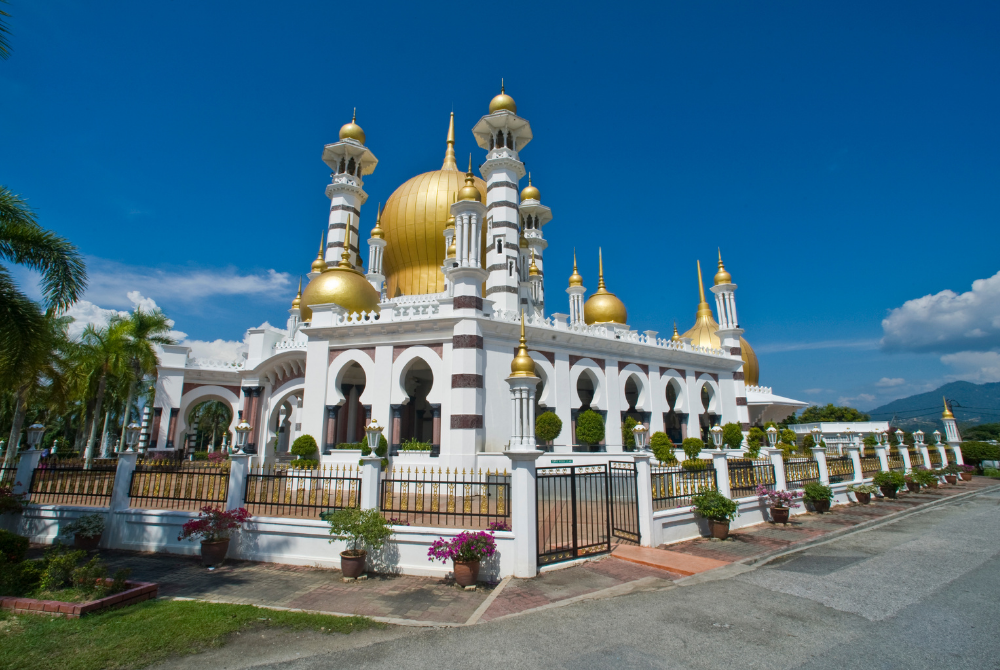
UBUDIAH MOSQUE
Located beside the Royal Mausoleum on Jalan Istana at Bukit Chandan in Kuala Kangsar is the Ubudiah Mosque, a mosque designed in the Indo-Sarcenic style by Arthur Benison Hubback, who was also responsible for the design of the Ipoh railway station and the Kuala Lumpur railway station.
It was built during the reign of the 28th Sultan of Perak, Sultan Idris Murshidul Adzam Shah I Ibni Almarhum Raja Bendahara Alang Iskandar Teja, who commissioned its construction as thanksgiving for his recovery from an illness that plagued him in his later years.
The construction of the mosque had been interrupted multiple times, once when two elephants ran over and damaged the Italian marble tiles. Another was when the first world war broke out.
The mosque was finally completed in late 1917 at a total cost of RM200,000. It boasts a central golden dome and four minarets as well as turrets topped with a few smaller golden domes.
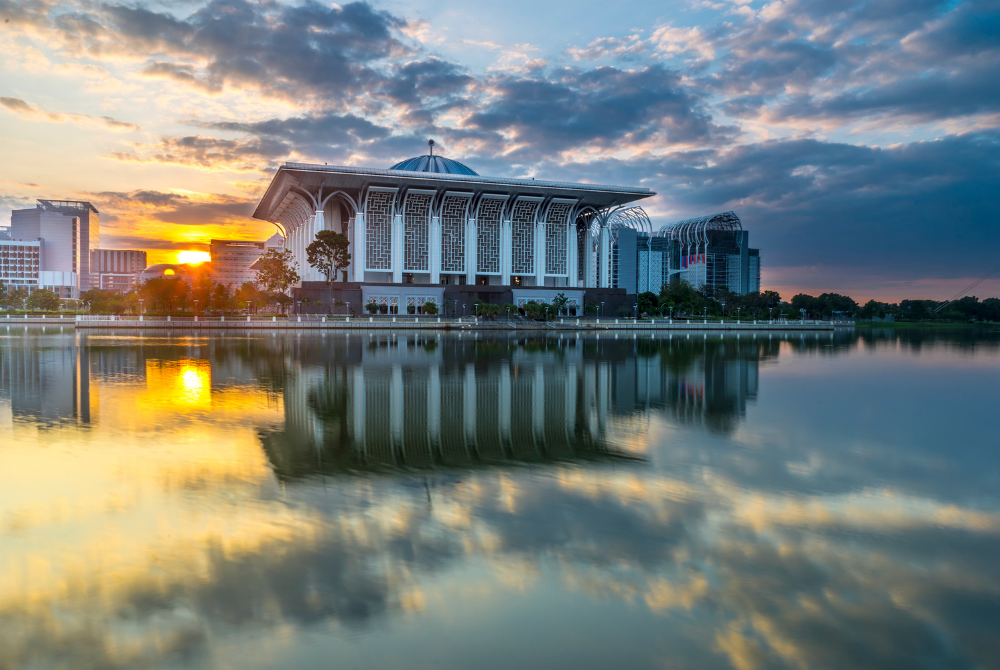
TUANKU MIZAN ZAINAL ABIDIN MOSQUE
The Tuanku Mizan Zainal Abidin Mosque, commonly known as the Iron Mosque is the second principal mosque in Putrajaya. It is located in Putrajaya's Precinct 3, opposite the Palace of Justice and next to the Islamic Complex of Putrajaya.
It took five years to construct and was officially opened to the public by the 13th Yang di-Pertuan Agong, Sultan Mizan Zainal Abidin ibni Almarhum Sultan Mahmud Al-Muktafi Billah Shah on June 11, 2010.
The mosque was built by using "architectural wire mesh" imported from the countries of Germany and China. The main entrance is made with glass-reinforced concrete to increase the integrity of the structure and fine glass was used to create an illusion of a white mosque from afar. It can house up to 24,000 people.
The path towards the mosque crosses a skyway known as the Kiblat Walk, which contains landscaping adapted from the ancient castles of Alhambra. The interior is decorated with Al-Asmaul-Husna calligraphy of the Thuluth variation. The entrance to the main prayer hall is adorned with verse 80 of Sura Al-Isra from the Qur'an.
There is a mihrab wall made of 13-meter-high glass panel imported from Germany inscribed with two verses from Sura Al-Baqarah on the right and Sura Ibrahim on the left. The mihrab wall is designed so that no light will be reflected, creating an illusion that the verses are floating on air.










